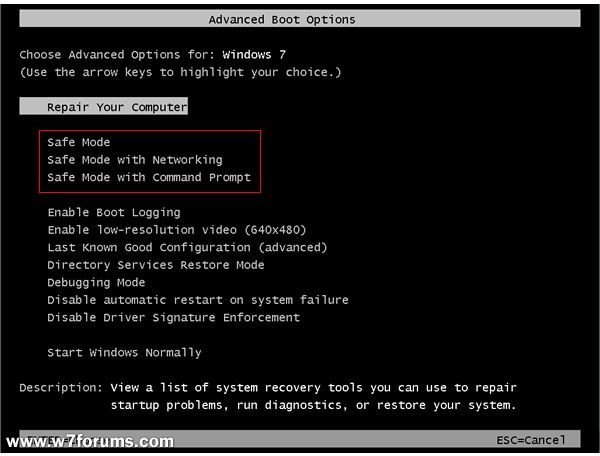

- #Mac restart to safe mode how to
- #Mac restart to safe mode mac os x
- #Mac restart to safe mode drivers
- #Mac restart to safe mode mac
- #Mac restart to safe mode windows
Deleting dynamic loader cache which fixes blue screen freeze. Loading important tools and features while restricting third-party startup services fonts, options. #Mac restart to safe mode how to
When booting into Safe Mode, it does a large number of operations that some of them are, How to Boot macOS Into Safe Mode in Virtual Machine
#Mac restart to safe mode windows
It’s just like Windows Safe Mode which provides you the necessary tools and features to fix those issues. While Safe Mode restricts third-party features, this doesn’t necessarily prevent you from accessing important tools.
#Mac restart to safe mode drivers
It won’t load a single third-party startup option, drivers or programs.
#Mac restart to safe mode mac
When you boot into Safe Mode, your Mac does a startup check-up, loads only essential kernel extensions and disable third-party startup fonts and options.


Booting into Safe Mode is quite different from booting normally. If you are experiencing some problems with your Mac whether you are on actual Mac or on a virtual machine, booting into built-in Safe Mode feature will help you troubleshoot and go away all the problems even if you can’t boot normally. If there’s a problem in your Mac, here’s How to Boot macOS Into Safe Mode in Virtual Machine. Select a tool and click Continue to perform the desired function.Assuming you’ve installed macOS on your computer, and accomplished with the post-installation things like installing VMware Tools or installing extension pack on VirtualBox, everything should be fine, right? But that doesn’t always happen especially macOS running in a virtual machine.
#Mac restart to safe mode mac os x
Once you have done this you will be taken to the Mac OS X Utilities screen shown below. Upon startup, press and hold the option key until you see the Apple logo.Upon startup, press and hold the command key and the R key until you see the Apple logo.There are two ways to access the Recovery HD: You must have internet access to use this function.ĭisk Utility: This option will open your Disk Utility, and will allow you to check, repair, erase, or partition your hard drives.

Get Help Online: This option will direct you to the Apple Support website.
IMPORTANT: Reinstalling the OS will erase all data on your hard drive. Due to the size of the operating system this process can take several hours. However, to fully reinstall Lion you must be connected to the internet because the operating system files and data have to be downloaded. Reinstall Mac OS X: This option will start the Lion installer. Note: In order to use this function you must have a complete backup, including system files, saved on your Time Machine. Restore From Time Machine Backup: This option will allow you to restore your entire system, including the operating system, all accounts, user data, and settings, from a Time Machine Backup. The Recovery Partition provides the following options: DoIT assumes no liability for data loss that occurs as a result of this procedure. Please contact the manufacturer or system developer for help.ĬAUTION: Please make sure your important data is backed-up on an external storage device (such as a CD, DVD, or external hard drive) before attempting this procedure. These instructions are provided for self help purposes only. NOTE: These procedures are not supported by the Help Desk. Recovery Partition - OS X 10.7 and Higher Generally, since the directory check occurs during the gray startup screen, you can reboot immediately after logging in. To return to a normal boot, simply restart the computer without holding any keys. While a Safe Boot can be helpful for troubleshooting, many services will be unavailable - specifically audio and network devices. In Mac OS 10.4 or later, you will have to login to your account, even if it normally does so automatically. Note: Startup will likely take substantially longer than normal. Once the gray Apple and progress indicator appear, release the Shift key. Immediately after the startup chime, press and hold the Shift key. 10.4 or later: Disables all startup and login itemsĪ Safe Boot can potentially repair problems that prevent Mac OS X from starting properly. 10.3.9 or earlier: Disables all non-Apple startup items. Load only the required kernel extensions. Force a directory check of the startup volume (as Disk Utility's Disk Repair). This can help to troubleshoot startup problems when an OS installation disc is not available.Ī Safe Boot will perform the following tasks: This document explains how to perform a Safe Boot in Mac OS X 10.2 or later and how to boot into the recovery partition for OS X Lion.








 0 kommentar(er)
0 kommentar(er)
